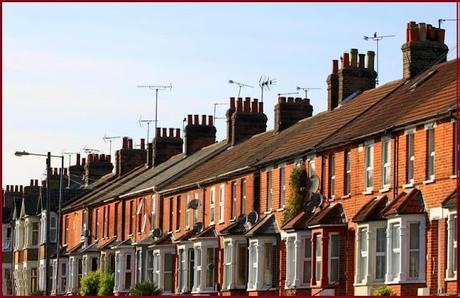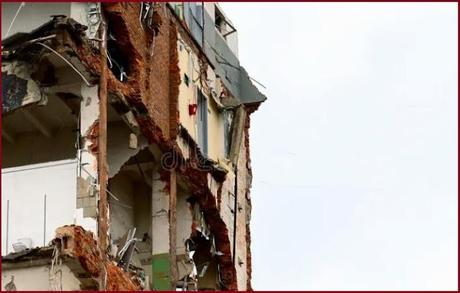For those of us who grew up watching football in the decades before the Hillsborough disaster (and the subsequent introduction of all-seater stadia), standing on the terraces of a Saturday afternoon or Tuesday evening was part and parcel of being a fan. My terrace experience began in Peterborough, at London Road, because I lived there for a few pre-teen years when my family came back from Africa. Then it was Cambridge City of the Southern League, just round the corner from where I lived during my adolescence. At one time City were the top team in town, but it was Cambridge United who eventually pipped them to a place in the Football League. When I went off to university in the 1970s, first division Coventry City was the local team and I started going regularly to home games, originally to watch Tommy Hutchison, an ex-Blackpool player recently transferred to the Sky Blues. That's how Coventry became my 'second' team, behind the mighty Blackpool FC (who were admittedly entering a long decline that only reversed in the 21st century).
Back then the terraces were packed, smoky, heaving masses of loud-mouthed humanity, swaying as one in excited response to the flow of the game, and though many fans (myself included) now regularly stand at games again in contravention of ground regulations, there's nowhere near the same intensity as once there was. Take Blackpool's stadium Bloomfield Road as an example. Its current capacity is around 16,000 and most games see crowds of around 10,000 but when we played at home to Manchester United back in the early 1970s there would be 30,000 crammed inside;

As a student, I lived for some years in one of a terrace of red-brick houses, although it called itself a street, in the Earlsdon area of Coventry. The housing there, in what was originally the watch-making quarter of the city, was mostly built between 1890 and 1920 in quite densely packed terraced residential streets with small front gardens, back yards and of course no garages. From the 1960s onwards it has featured a large student population. We were four couples renting the house, all attending nearby Warwick University (which is actually on the outskirts of Coventry and not in Warwick at all , or even in Warwickshire anymore since the creation in 1974 of the metropolitan county of West Midlands). The house was owned by a very nice Pakistani man and he charged us £15 a week to live there - that's in total, not per person or couple; i.e. less that £2 a week each, or £8 per person per month, a steal compared to the cost of university accommodation. The equivalent charge nowadays is £450 per person per month! What's more, he let us do what we wanted with the place, told us to decorate it as we wished and to bring him the bills for paint and paper, which we duly did. We couldn't believe our luck!
My girlfriend and I plus China the cat drew the lucky longest straw and had the whole of the top floor as our bedroom. It seemed palatial. The other bedrooms were on the second floor The living-room, kitchen and bathroom were on the ground floor. The original plan had been to rotate bedrooms each year, but once everybody was settled in that idea died a death. Being on the top floor, right under the eaves, we also had a balcony (great for sun-bathing on sunny days) and a wrought-iron fire-escape in case of emergencies. Our view over the shunting yards (it being close to Coventry station) was scintillating. I've just checked on Rightmove and those terraced properties sell for between £400,000 and £500,000 nowadays. Our nice Pakistani landlord probably cashed in years ago. We used to go round to pay the rent once a month and his wife would always give us lovely food to eat, vegetable samosas or stuffed parathas, while their shy children stared at us with huge eyes,
It was a close-knit neighbourhood, a proper community, with a local pub and corner shop, no through traffic, hardly a car on the streets. We used to play frisbee up and down the middle of the road although the park was only a ten minute walk away; sometimes football with the local kids, poorly dressed, snotty little urchins and yet they were loved. We practically adopted a posse of them, let them draw at our dining table, read them stories, sometimes fed them too. Occasionally someone would get drunk and kick off, husbands and wives shouting the odds at each other. Sometimes there would be broken milk bottles across the pavement of a morning. But it was by and large a friendly working-class neighbourhood and they were happy times, the terrace years.
For a poem this week I've drawn upon and extrapolated from an incident that happened twenty years later when I was living in Hemel Hempstead, married and with two small children. The office where I worked was within walking distance of where I lived, at the end of another terraced street as it happened. I'd only been at work for about half-an-hour when there was the most almighty explosion. It shook the building I was in, there was a huge pall of smoke at the other end of the street and soon a welter of sirens as emergency vehicles raced to the scene. A whole end-of-terrace house had blown apart in what turned out to be a gas explosion. The only occupant at the time, her husband and children having recently left for work and school, was a housewife who was taking a morning bath. She ended up propelled out on the street as the upstairs collapsed, still in the bath but miraculously unhurt. It was the most extraordinary occurrence. (Moral: never smoke in the bath.)

Here then, with quite a few liberties taken as to time, place and personnel, is the latest from the imaginarium.End OfIt split the air like the end of the world,could be heard from half a county awayand then the sirens and anxious phoningfrom home to office, factory to home -are you okay? was it near you? Onlywhen local radio started putting out itsbulletins did we know, relief replaced bycuriosity, and hindsight came in to play.
Some who'd walked past earlier that dayrecalled a niff of gas in the area. One hadknocked on the door of the old reclusein the last house of the terrace, been toldthrough the letter box to beggar off. Theevening paper stated Massive Gas BlastRocks Worlds End. One Man Dead. Bythen hundreds had circled past to gawp
at the ruin behind the cordon, myself aswell walking back home, all shocked ofcourse by the extent of devastation, bitsof torn taupe wallpaper flapping on wallswith paler patches where pictures hung,acid green gloss denoting the kitchen orwhat was left, cabinets askew. Nothingnow to see of his bathroom where that
ancient geyser blew, just a row of jagged joists poking into space, a sobering sight.A late night regional TV news interviewwith neighbours, relocated for their safety to an hotel, spoke affectionately enoughabout old Bill. He would be missed. He'dalways said they'd only get him out feetfirst. In his bath, though, that was a twist.I'll leave you on a more upbeat note with a beautifully jazzy musical bonus, Herb Alpert and Chuck Mangione playing the fabulous, funky City Terrace. Enjoy! Thanks for reading, S ;-) Email ThisBlogThis!Share to TwitterShare to Facebook
